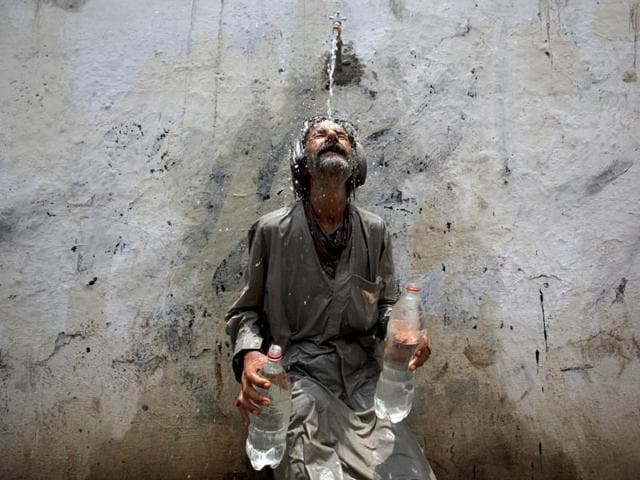Karachi heat wave shows how urban centres are becoming death traps
The Karachi heat wave, which has killed more than 1,000, shows how urban centres are slowly becoming death traps.
Earlier this week, a Karachi-based journalist tweeted a “heart rending” photograph of a frail old man lying on a road while a relative/bystander poured water on him. The man’s weather-beaten face had an exhausted and helpless look; it seemed as if he was about to succumb to the heat wave that is sweeping through the Sindh province of Pakistan.

Experts like Qamaruz Zaman Chaudhry, who authored Pakistan’s first National Climate Change Policy, believes that the heat wave in Karachi, the capital of Sindh, which has killed over 1,000 people, is “one of the manifestations of climate change”. Others have pointed to the fact that the city is suffering from the ‘urban heat island’ (UHI) effect, which has turned the city into a furnace, and this is the reason behind such a high death toll.
Urban heat island is defined as the rise in temperature of any man-made area, resulting in a well-defined, distinct ‘warm island’ among the ‘cool sea’ represented by the lower temperature of the area’s nearby natural landscape.
The situation in Karachi has lessons for cities in India, many of which are also becoming urban heat islands, thanks to reckless urbanisation. Man-made structures which overwhelm our cities absorb solar radiation during the day, forming a dome of warm air over them. There is no respite even after sunset because the buildings form a “canopy structure that blocks heat diffusion to the upper atmosphere”.
Along with concrete structures, heat build-up increases due to electrical equipment and vehicular emission. This heat build-up also happens because of the destruction of “heat sinks”: Lakes, sandy areas, fallow and scrub land. Scientists expect such urban heat waves to increase in frequency and intensity as cities grow.
“While the effect of UHI could be one of the factors for the high number of deaths in Karachi, there are other reasons such as lack of supply of water, awareness about heat waves and lack of shelters compounded the problem,” PG Dhar Chakrabarti, Distinguished Fellow, The Energy and Resources Institute, told me. “This lack of preparedness was also seen in India … don’t forget 2,000-plus died this summer here”.
That Karachi, like many Indian cities, was not ready for the summer is clear from the statement of Sindh’s health minister JM Dahar: “We are launching awareness programmes ....that people must not expose themselves to direct heat and must drink plenty of water”. Talk about shutting the stable door after the horse has bolted.
In both Pakistan and India, the poor have borne the brunt of the angry weather gods.
Two Indian states have taken the lead in tackling this problem: Ahmedabad has a Heat Action Plan that warns people, especially the vulnerable, on how to protect themselves from heat waves. The authorities install drinking water stations and conduct survey of all construction sites to ascertain the availability of drinking water and shelter for rest in afternoon for labourers working there. Odisha has changed its official working hours so that people can stay indoors during the peak heat hours.
These urban heat islands could turn into death traps unless, as Dhar Chakrabarti said, authorities invest heavily in constructing green buildings, install energy-efficient equipment and increase green spaces.




